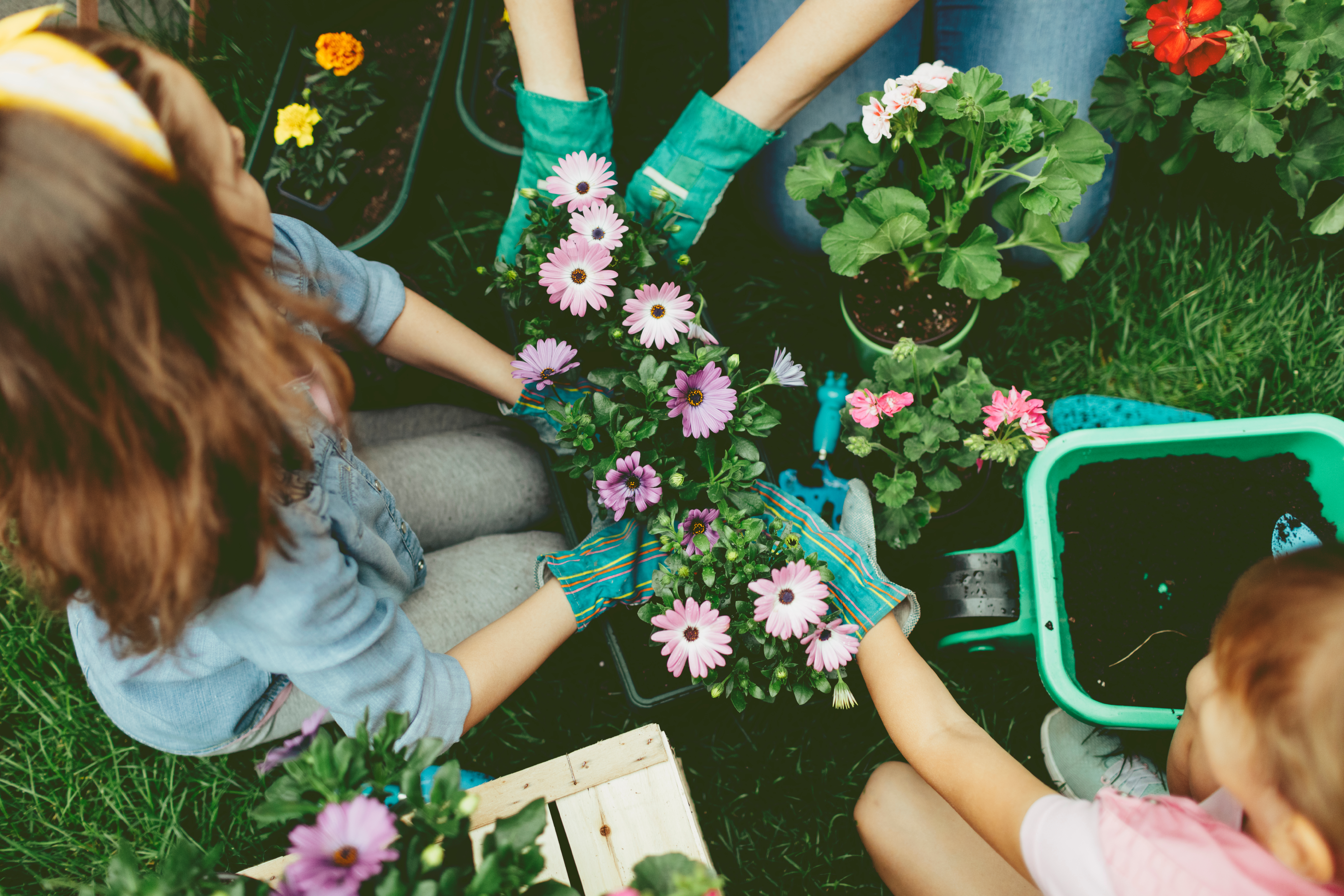There’s nothing like cooking with homegrown ingredients. Your children will love getting their hands dirty, helping out in your very own veggie patch. Gardening is a fun, screen-free way to spend time together outdoors. It also teaches responsibility, patience, and an appreciation for where food comes from.
“From herbs to fruits and even vegetables, you really can have it all when it comes to having an edible garden,” says Melissa. “These days, you can grow everything from peaches and cherries to cabbages and cauliflower – no matter how small your backyard is.”
Start Small and Keep It Fun
You just need some sunshine, good-quality potting mix and a little imagination. For beginners, Melissa recommends dwarf plants. They produce full-size fruit and veggies but only grow to about 1.5 metres tall, making them perfect for pots and small spaces.
If you’re looking to start with fruit, try the Lots a’ Lemon variety of lemon trees or Trixzie fruit trees, which offer peaches, nectarines, cherries and even pears. For veggies, try leafy greens like lettuce, silverbeet, cauliflower, broccoli and cabbage during the cooler months.
Loose-leaf lettuces are a great family favourite because they’re known as “cut and come again” plants – simply pick the outer leaves and they’ll keep growing. As Melissa says, it’s like having your very own backyard salad bar!
Let the Kids Choose
A backyard veggie patch is a wonderful way for children to learn about nature and nutrition. Let them help decide what to plant. If they love salads, lettuce is an easy option. If they have a sweet tooth, strawberries are a must! Watching strawberry flowers turn into bright red fruit ready to pick and eat is a magical moment for any child.
If your little one is more drawn to imagination than vegetables, a fairy garden can be just as rewarding. Let them pick plants that catch their eye at the nursery – maybe a soft fern for an indoor fairy garden, or a lavender plant for a sunlit outdoor space. Add a few miniature ornaments, and you’ve got a whimsical garden that sparks creativity and care.
Teach by Doing
For older children, gardening can be a great way to learn responsibility. Give them simple jobs like watering, weeding, and mulching, or have them collect flowers and foliage to display indoors. It’s time well spent together, and they’ll take pride in seeing the results of their efforts.
Melissa suggests getting creative with your garden layout, too. “Group your herbs by theme or cuisine,” she says. “You could have all your Mediterranean plants like oregano, basil, rosemary and marjoram, or your Asian herbs like chives and curry plants in large, coloured pots.”
Watch Your Garden (and Kids) Grow
One of the best parts of growing your own food is seeing how quickly things flourish. “It all depends on the crop,” Melissa explains. “For slower-growing plants like broccoli, you might wait around 10 weeks, but for fast-growing plants like lettuce, it could be just five weeks.”
Even better, the smaller your garden, the more opportunity you have to change things up seasonally. While some plants, like asparagus, rhubarb and citrus fruit trees will grow year-round, experimenting with new varieties each season keeps the garden exciting.
Why Gardening Matters for Children
At Edge Early Learning, we’ve seen firsthand how powerful gardening can be for children’s development. Growing plants and vegetables introduces basic science concepts like life cycles and ecosystems, encourages healthy eating, and helps children learn to care for the environment.
Natural outdoor spaces also help calm and focus children. It’s a refreshing change from the fast pace of screens and technology. Gardening builds patience, curiosity and a lifelong appreciation for nature.
A Green Legacy
Whether it’s a fairy garden, a veggie patch, or a mix of both, gardening is a wholesome pastime that brings families together and teaches life-long skills. After all, the fruits (and veggies of your labour are delicious.
So, grab your gardening gloves, rally the children, and start planting soon – because the seeds you sow today will grow into memories (and meals) that last a lifetime.

